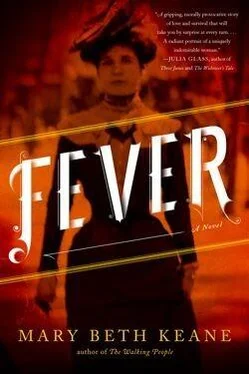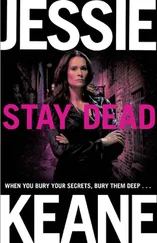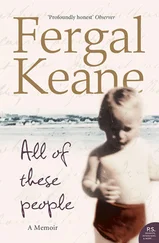I’ve been what they call a special guest of New York City for twenty-three years now, and if you include my first time on North Brother that makes it twenty-six. They are good to me now and there are nurses here who weren’t even born the first time I was on this island and who know nothing about me or my case, except that I am not sick in the traditional sense or at least not like those dying in the hospital.
My body is heavy and there are times when I am so ashamed to be the way I am that I don’t like to come out of my bungalow for a few days. Sometimes I pass an hour thinking about how I used to be young and slim and strong but there’s no point in thinking of differences like that, especially ones that can’t be helped. I was beautiful no matter what anyone says, and smart, and I was a gifted cook. The only times I feel the unfairness of this is when one of the young nurses looks at me and I know she must think me ugly and awful. I feel it’s important for her to know that I didn’t used to be like this. Then to be fair I think of how much I brought upon myself by what I said and did and how I fought. Also I know I’d no longer be beautiful even if I had never set foot on North Brother — it’s a problem of age, not geography.
Father Silva visits me more often lately and I think he means to bring peace now that I’m not very well but priests still annoy me. I suppose my faith is intact, or as intact as it ever was, but it’s these idiotic priests I find so trying. The priest who used to visit me during the Great War used to pray for peace and an end to starvation in Russia and after all that praying he’d want a cup of tea and would be annoyed if the hospital had sent over plain scones instead of raisin or blueberry.
They let me work in the lab at the hospital for many years and that was good work. It was not so unlike cooking in that everything must be just so — the liquids and solids and the weighing and spinning — except in the end, of course, there’s nothing wonderful to eat, just a report on a piece of paper. I would write down all the numbers and the researchers said I was helpful. One time I gave Dr. Sherman an apple I had taken from the cafeteria for myself but then decided it was such a nice-looking apple and my stomach was so full that I’d give it to Dr. Sherman instead, but she left it by the centrifuge that contained urine and had to throw it out. She apologized to me for that but I know she left it where she did on purpose so she’d have an excuse to throw it out. When that happened I understood that the old things they said about me would never be forgotten.
John Cane died in 1929, and as far as I know George Soper is still alive, though retired. John Cane was my friend and I’ve missed him. Sometimes when I’m tired I make a mistake and expect to see him and then I remember. Soper writes about me from time to time. I’m not sure whether he ever married or had children and I suppose I should confess that I hope he did not have those things since I did not. Sometimes I still think that all of this is his fault. Even Alfred’s death seems to be Soper’s fault, in a way. This is what Father Silva says I have to work on. It’s not just Soper’s fault. It’s also my fault, and the city’s fault, and no one’s fault. It just is.
I keep up with the news, but even the most serious things seem at a great distance from me. None of the world events I read about applies to North Brother, where everything stays the same. Most days I pass a little time knitting with a group in the recovery ward of the hospital, and when it’s sunny the nurses help us set up chairs in a circle outside in the sun. Sometimes on a Saturday they’ll show a talkie in the cafeteria — just before my stroke they showed All Quiet on the Western Front, and I thought it was brilliant. Then someone told me that it came out several years ago and that threw me because I wondered what else has happened that I’ve missed and won’t get to know for several more years. Once in a while a writer or reporter comes out here to see me, but that’s rare, these days. Earlier this year they told me that I could leave the island if I want to, if there’s anyone I want to visit, or perhaps just to visit the city itself. At first I thought they were kicking me out, but then I realized they were suggesting a day trip. Two things surprised me when this happened. The first, that I didn’t want to be asked to leave North Brother for good, and the second, that I have no one to visit anymore.
Lately, I’ve been thinking more and more about the Kirkenbauer boy, and the Bowen girl, and the others they said died because of me. None bothers me as much as Tobias Kirkenbauer, and I mention him now knowing he’ll be news to the person who reads this. I know the records on me go back only as far as 1901. He died in 1899. I don’t really know what to put down on this paper about him except that I remember him, and I loved him, and if I ever believed for one second that I was bringing harm to him, I never would have stayed. If any of you were able to look into my mind, you would not be able to call my actions a crime, just an accident, a misunderstanding. Soper said to me way back in 1915 that I can make myself out to be the victim one time, but not the second time. He meant the maternity hospital, and the bakery, too, I suppose, and how I could go and put all those lives at risk. All I can say is that I thought I was doing the right thing, but I was doing the wrong thing, and it was a theme that repeated itself often. What I want to say about that sweet baby now is that if there is a heaven, and I see him there, I hope he remembers me, and runs to me, and forgives me.
I am deeply grateful to my agent and friend, Chris Calhoun, for his confidence in this novel and for a perfect New York City day I will never forget. Many, many thanks to my incomparable editor, Nan Graham, for seeing the strengths in the early manuscript, and for pushing me to make it better; to Kelsey Smith, for reading with such a keen eye and helping me find solutions when I floundered; to my foreign rights agent, Jenny Meyer, for bringing Mary Mallon to places she’s never been; to my UK editor, Jessica Leeke, for her enthusiasm and support.
From the pile of books and newspapers I consulted while writing this novel, I must single out Judith Walzer Leavitt’s fascinating book, Typhoid Mary: Captive to the Public’s Health . It served as my starting point and my touchstone for four years. For insight on the point of view of the late-nineteenth- and early-twentieth-century servant class, I am most indebted to a series of short autobiographies that originally appeared in The Independent, and were collected by Hamilton Holt in 1906: The Everyday Lives of Undistinguished Americans as Told by Themselves.
I owe much to the Ucross Foundation of Ucross, Wyoming, for granting me twenty thousand acres of silence for two critical weeks in 2010. Thanks also to the Free Library of Philadelphia, Butler Library of Columbia University, and the English Department of Barnard College, where I did most of my research, and where I wrote large sections of this novel.
Of course, none of the research matters without time to write the book, and for that I thank my mother, Evelyn Keane, for taking such good care of my boys when I went off in search of a quiet place for a few hours, and my aunt Mae O’Toole for being there at a moment’s notice when I needed her most.
Thanks to my dear friends Eleanor Henderson and Callie Wright, for taking time out of their own work to read and provide feedback on mine. Whenever I found I’d written myself into a corner I could always depend on one of them to help me find the way out.
My deepest gratitude to Julie Glass for thinking of me in the fall of 2011. I will never forget how a few generous words helped propel this novel forward.
Читать дальше












